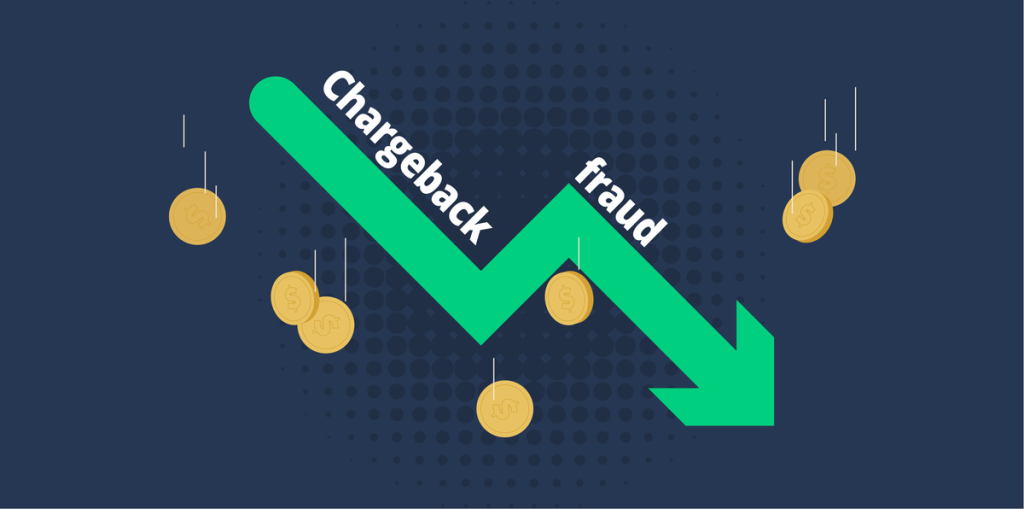Introduction
Chargeback fraud is a persistent challenge for businesses, especially in eCommerce. It happens when a customer disputes a legitimate transaction, aiming for a refund. According to Mastercard’s Fraud Prevention Guidelines, chargeback fraud impacts 80% of businesses, resulting in financial loss, fees, and potential limitations on card processing.
The complexity of chargeback fraud requires robust detection and prevention tools. These tools identify fraudulent activities, prevent disputes, and reduce financial risks for businesses.
The Process of Chargeback Fraud
To protect your business, understanding how chargeback fraud works is essential.
How Chargeback Fraud Occurs:
- Customer Dispute: A customer contacts their bank or credit card issuer, disputing a transaction.
- Provisional Refund: The bank issues a temporary refund to the customer, pending investigation.
- Merchant Response: The merchant is notified and can challenge the chargeback by providing evidence.
- Final Decision: The bank either sides with the merchant or the customer, based on the evidence.
There are different types of chargeback fraud:
- Friendly Fraud: Legitimate customers falsely dispute charges to avoid paying.
- Triangulation Fraud: Fraudsters use stolen payment information to purchase goods.
Key Chargeback Fraud Detection Tools
Effective prevention tools focus on fraud detection, automation, and real-time monitoring.
Machine Learning Algorithms
Machine learning (ML) tools detect fraud by analyzing transaction data and identifying suspicious patterns. ML systems continuously learn from historical data, improving over time. For example, Mastercard’s fraud detection systems use ML to flag high-risk transactions, reducing the chances of undetected fraud. Braintree also offers customizable fraud detection to suit specific business needs.
AI-Driven Chargeback Representment
AI-driven representment tools automatically gather transaction data, customer interactions, and supporting documents. This automation improves the merchant’s ability to dispute fraudulent chargebacks successfully, streamlining the representment process.
Digital Footprinting and Data Enrichment
Fraudsters leave digital traces such as IP addresses, device types, and behavior patterns. Tools like SEON analyze this information to detect inconsistencies in user behavior. These tools correlate data with behavioral patterns to flag fraud, improving detection accuracy.
Real-Time Monitoring
Real-time monitoring tools detect anomalies in transactions as they occur. Systems like Checkout.com provide instant alerts to potential fraud, enabling businesses to take immediate action before a chargeback is filed.

Types of Chargeback Fraud Detection Tools
Chargeback fraud detection tools can be grouped into several categories:
- Rule-based Systems: These systems flag suspicious transactions based on predefined rules, such as mismatched billing and shipping addresses.
- AI-based Systems: AI systems use algorithms that adapt over time by learning from historical data to detect evolving fraud tactics.
- Behavioral Analytics: These tools monitor customer behavior, such as browsing patterns and device usage, to identify possible fraud.
Impact of Chargeback Fraud on Businesses
Chargeback fraud results in multiple direct and indirect costs:
| Impact Area | Description | Cost per Instance |
|---|---|---|
| Lost Revenue | Merchants lose both the sale amount and any shipping fees. | $100-$500 per chargeback |
| Chargeback Fees | Banks impose additional fees on merchants for processing chargebacks. | $15-$100 per chargeback |
| Operational Costs | Time and resources spent gathering evidence and contesting chargebacks. | 1-2 hours per dispute |
| Monitoring Fees | Businesses with high chargeback ratios may be subject to card monitoring programs. | Varies, often thousands per month |
| Risk of Losing Payment Processing Privileges | High chargeback ratios can lead to the loss of processing capabilities. | Severe loss of revenue and customers |
Businesses facing frequent chargebacks not only lose revenue but may also face long-term operational impacts. When chargeback ratios exceed 1%, merchants may face higher fees or even be cut off from processing payments with certain providers.
Chargeback Fraud Prevention Tools: Benefits
Businesses using chargeback fraud detection tools gain several advantages:
- Revenue Protection: Fraud detection systems prevent chargebacks before they happen, reducing lost sales and associated fees.
- Operational Efficiency: Automation tools handle the chargeback dispute process, saving time and resources.
- Improved Customer Trust: Secure transaction environments foster trust between businesses and customers.
For businesses dealing with large transaction volumes, Merchanto.org is a recommended service provider. As an official partner of VISA and Mastercard, Merchanto.org offers solutions to minimize chargebacks and safeguard business revenue. Learn more about their services here.
Comparison of Leading Chargeback Fraud Detection Tools
| Tool | Features | Best For | Price Range |
|---|---|---|---|
| SEON | Digital footprint analysis, email profiling | Small and medium businesses | $99/month |
| ClearSale | Machine learning, chargeback guarantees | Large eCommerce businesses | $1000+/month |
| Braintree | Customizable fraud detection settings | Small to mid-sized businesses | 0.15%-0.5% per transaction |
| Stripe Radar | AI-powered fraud detection | Businesses with high transaction volume | 0.5%-2.0% per transaction |
| Checkout.com | Real-time monitoring, chargeback alerts | Global eCommerce businesses | Custom pricing |

Choosing the Right Fraud Detection Tool
When selecting a chargeback fraud detection tool, consider these key factors:
- Scalability: Ensure the tool can grow with your business.
- Customizability: The tool should allow you to set custom rules based on your business needs.
- Integration: Verify that the tool integrates seamlessly with your existing payment processor, such as Stripe, Braintree, or Checkout.com.
Chargeback Fraud Statistics (Data Table)
| Type of Fraud | Percentage of Total Chargebacks | Average Cost to Business |
|---|---|---|
| Friendly Fraud | 58% | $300+ per chargeback |
| Merchant Error | 22% | $100-$200 per dispute |
| Criminal Fraud | 20% | $500+ per fraudulent charge |
These statistics highlight the importance of addressing both friendly and criminal fraud, as they account for nearly 80% of all chargeback cases. Reducing the occurrence of these types of fraud can significantly lower a business’s chargeback ratio.
How Fraud Detection Tools Help Minimize Risk
Fraud detection tools offer proactive solutions to reduce the risk of chargeback fraud:
- AI Representment: Automatically compiles evidence, increasing the chances of successful chargeback disputes.
- Machine Learning: Detects patterns of fraudulent behavior before chargebacks occur.
- Behavioral Analytics: Tracks customer habits, such as login behavior and transaction activity, identifying fraudsters more accurately.
Common Tools for Fraud Detection and Prevention
In addition to specific chargeback detection tools, businesses can benefit from broader fraud prevention systems. Here are key mechanisms for fraud prevention:
- 3D Secure 2.0: A protocol used to authenticate cardholders during online transactions, reducing fraud risks.
- Tokenization: Replaces sensitive payment information with unique tokens, keeping card data safe.
- Strong Customer Authentication (SCA): Required by PSD2 in Europe, this method strengthens security with multi-factor authentication.
Visa’s Chargeback Monitoring Program and Mastercard’s Dispute Resolution Services also provide guidance and tools for merchants to track and contest chargebacks efficiently.
Conclusion
Chargeback fraud detection tools are essential for protecting businesses from the costly effects of chargebacks. Tools that use AI, machine learning, and real-time monitoring help identify and prevent fraudulent transactions before they escalate into disputes.
Proactively addressing chargeback fraud is no longer optional—it’s a necessity for protecting revenue and maintaining a healthy business. Implementing the right detection tools is the key to mitigating risk, improving customer trust, and ensuring long-term success.



